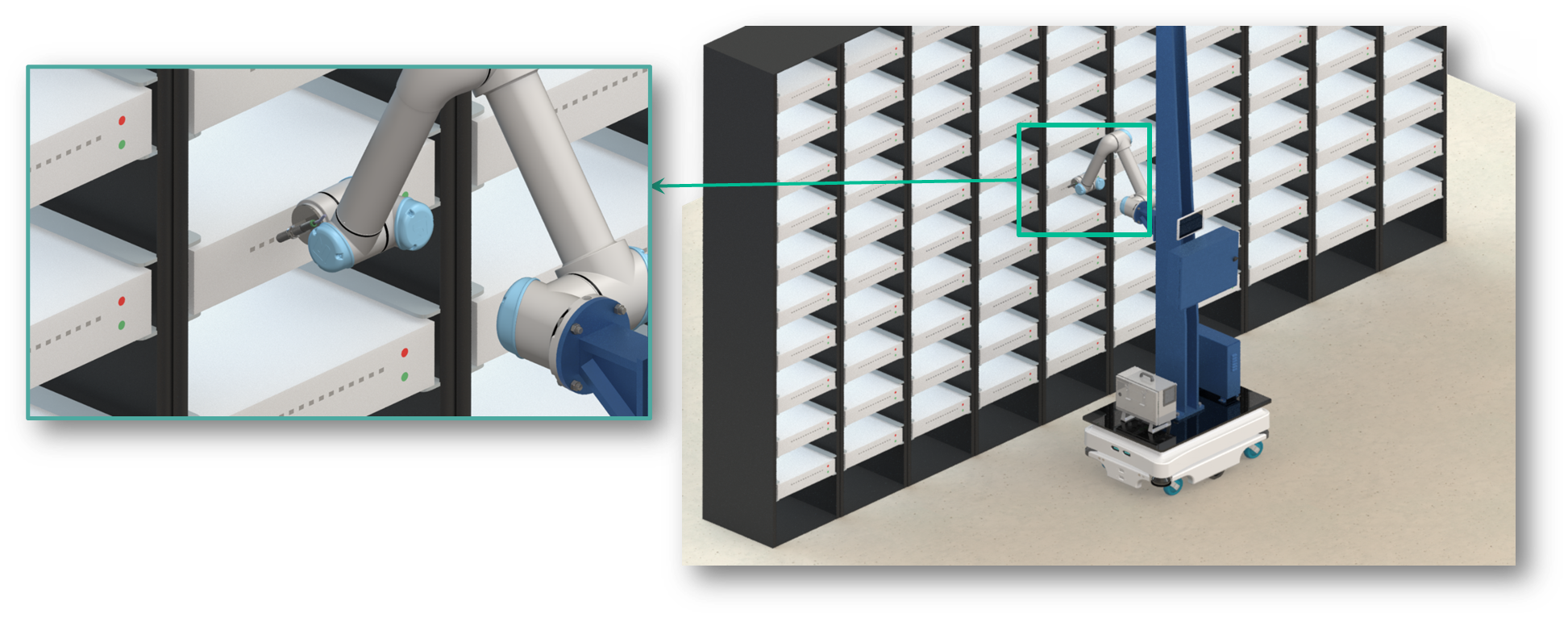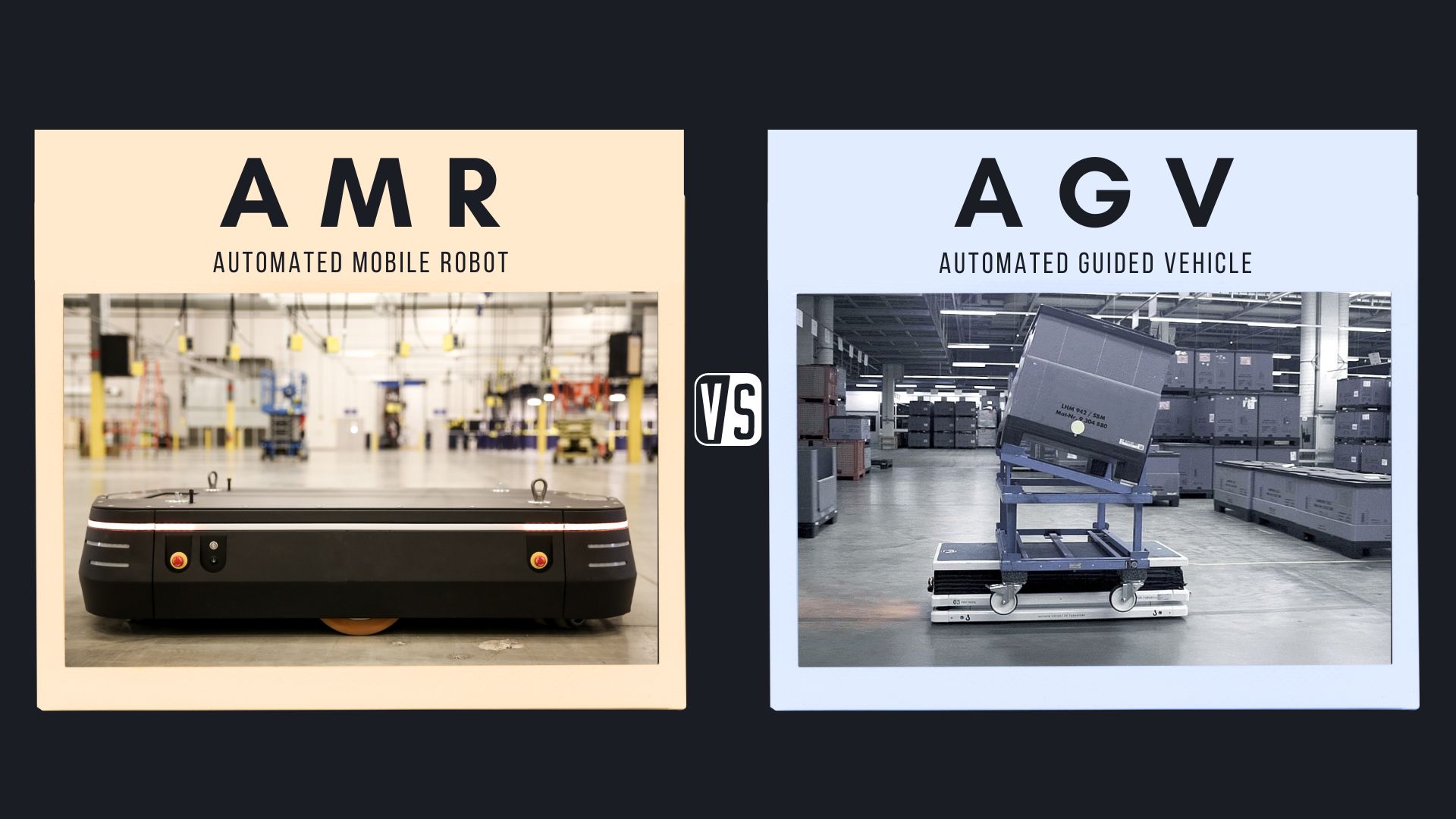Though both are used for material transportation, there is a fundamental difference in their operation and flexibility. Understanding the difference between AMR and AGV could potentially have an impact on a business.
Autonomous Mobile Robot (AMR) vs Automated Guided Vehicle (AGV)
Autonomous Mobile Robot AMRs are a type of robot that can understand and move through their environment without being overseen directly by an operator or limited to a fixed, predetermined path. An autonomous mobile robot is not simply a programmed machine. Automated guided vehicles AGVs are robots that follow fixed paths or tracks for material transportation, typically requiring infrastructure changes like magnetic tapes or wires.
Advantages of using AMR over AGV
There are several advantages to using AMR over AGV. AGVs are being challenged by the more sophisticated, flexible, and cost-effective technology of AMRs. Firstly, AMRs offer a high degree of flexibility because most use dynamic navigation strategies. Installation is quick, and their routes and actions can be easily modified. They do not require major infrastructure changes before being brought into operation, and their natural navigation is fleet-ready, meaning mobile robots can be connected in a scalable fleet.
In terms of expenditure, AMRs are more optimized since they do not require any external infrastructure. Additionally, modifications to a process can be seamlessly implemented. AMRs are quick to install and configure, as most functionalities are pre-programmed, giving them high efficiency.
Advantages of using AGV over AMR
AGVs provide cost savings and control, their reliability and cost reductions makes it efficient in having a controlled process. Maintenance can be controlled by optimizing the acceleration and braking control of AGVs. Predictability in AGVs becomes essential in warehousing and manufacturing. The scalability of AGVs offers support in case of adding further AGVs or when the product is changed. The safety features of AGVs significantly help in avoiding industrial accidents.
Where to use AMR?
The investment range for AGV is higher than that of AMR. Although in longer runs, AGVs are most suitable, AMR are less costlier than of AGV. Additionally, AMRs do not require additional infrastructure facilities, making them a more affordable choice.
The flexibility of AMRs in accommodating various manufacturers makes them a versatile option. Unlike AGVs, which rely on a single manufacturer, AMRs allow for agile adaptation to different environments. They offer flexible routing, akin to human forklift operators, whereas AGVs are limited to fixed routes. Implementing new routes with AGVs requires additional infrastructure and time. Moreover, AGVs face challenges operating on slippery, wet, or sloped surfaces, whereas AMRs excel in such conditions.
Similarly, AES has developed an AMR for inspecting individual server temperatures, used to navigate through server racks while a collaborative robot(COBOT) is used to measure temperature with flexibility. Click here to know more about AMR and AES’s success story.

Fig 2 AMR server inspection robot for server room – Measuring Temperature
Where to use AGV?
AGVs are suitable for handling goods of varying weight proportions. In contrast, AMRs are known for their smaller payloads, allowing them to navigate complex environments more easily. Therefore, the weight of the goods and the environment play crucial roles in selecting between AGV and AMR. The payload limitations of AMRs restrict their application to lightweight goods.
While AMRs are programmed to bypass obstacles, they may not be suitable for all environments. In certain cases, mobile robots may struggle to navigate around obstacles. Conversely, AGVs are equipped with obstacle detection capabilities, making them suitable for any environment. The ability to stop when encountering obstacles allows AGVs to declutter the environment effectively.
AMRs rely on equipped sensors, and their performance depends on light conditions. While they can navigate wet and sloped surfaces effectively, they require a controlled environment for seamless navigation. Additionally, the navigation capabilities of AMRs vary based on the model and manufacturer. Therefore, thorough knowledge of the product is essential before selection.
Conclusion
AMR and AGV are extensively used in industrial applications to enhance production capabilities. However, selecting between the two can be critical. It’s important to understand that both technologies have unique advantages and disadvantages. Therefore, the selection should be based on the specific requirements of the applications. Factors such as scalability, flooring, environmental conditions, weight of the goods transferred, cost, and interoperability between manufacturers should be carefully considered when choosing the right technology.
Need help with AMR and AGV? Reach out to us
We’re always here to help, Explore AES’s expertise in Industrial automation capabilities! Step into the future with AES – Your End-to-End, Industrial Automation Partner.

